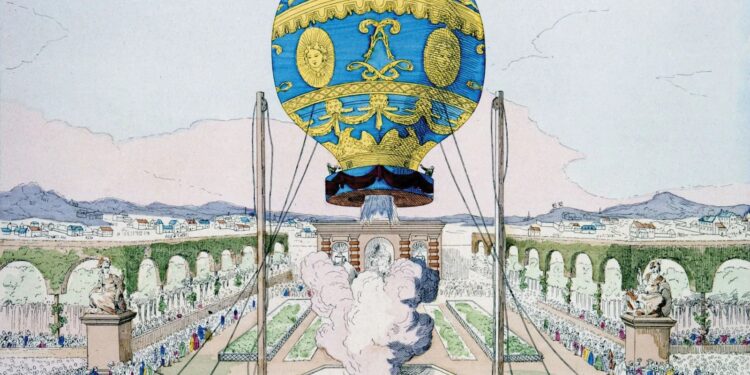On this day in 1783, the Montgolfier brothers achieved a milestone in aviation history by sending a hot-air balloon into the skies of France, carrying a rooster, a duck, and a sheep as its passengers. This unusual crew marked humanity’s first recorded attempt to test the effects of flight on living creatures.
A bold experiment in Versailles
Joseph-Michel and Jacques-Étienne Montgolfier, sons of a paper manufacturer from Annonay, were pioneers in ballooning. Their invention of the hot-air balloon was a breakthrough in understanding how heated air could provide lift. To demonstrate the safety of their device before risking human lives, they staged a public experiment on 19 September 1783 in the grounds of the Palace of Versailles, before King Louis XVI and Queen Marie Antoinette.
Choosing the animal crew
The choice of passengers was symbolic and practical. A sheep was selected to mimic the physiology of humans, particularly in terms of respiration at altitude. The duck, already accustomed to high flight, served as a control. The rooster, unable to fly at significant heights, provided contrast. Together, the trio offered a way to observe how different animals might react to the stresses of aerial travel.
Flight and safe landing
The brightly decorated balloon ascended to around 480 metres and remained aloft for roughly eight minutes, covering about three kilometres before making a safe descent. Upon inspection, all three animals were unharmed, aside from minor injuries to the rooster caused by the sheep’s movements during the flight. The success reassured both the royal court and the scientific community that balloon travel might be safe for humans.
Paving the way for manned flight
The Versailles demonstration was a turning point. Just two months later, on 21 November 1783, the Montgolfier brothers launched the first free manned flight with Jean-François Pilâtre de Rozier and François Laurent d’Arlandes aboard. This achievement established the beginning of human aviation and inspired further experimentation across Europe.
Legacy of the Montgolfiers
The flight of the rooster, duck, and sheep is remembered as both a scientific trial and a spectacle of the Enlightenment era. It showcased France’s appetite for innovation and the growing fascination with science and discovery. Today, the Montgolfier brothers are celebrated as pioneers who brought humanity closer to conquering the skies.
Newshub Editorial in Europe – 2025-09-19


Recent Comments